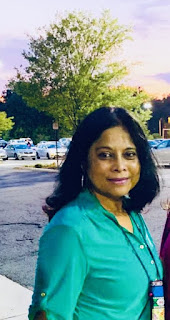I looked in horror and amusement at the print materials on my table. They were intended to raise awareness against female genital cutting (FGC). They had been sent by various agencies and by my colleagues in ESAR. Most of the drawings showed a “witch” who seemed to be an old woman holding a shining large knife, gloating over her deed.
I decided to speak personally with girls who had gone through the process. We selected a girls’ school in Kajiado–48 miles from Nairobi. We started early in the morning. Wangari, our local research consultant accompanied me. She briefed me that 80-85% of the girls and teachers in that school had been circumcised.
The headmistress was welcoming. Her name was Sophia. My mom’s namesake––I told her this and was rewarded with a warm embrace. We ran a few focus group discussions (FGDs) with short intervals in between. In every FGD, the girls expressed their pain, horror and anger. They didn’t want to be cut. It was forced upon them––violated them physically, emotionally. They were circumcised because their families wanted to follow tradition.
Some girls met with me afterwards.
“Why did they have to cut me? They grabbed me by force. I didn’t want to be cut. My body burnt in pain,” a fourteen year old said, her eyes stormy in pent-up anger.
“I trembled in fear . . . cried out for my mother. She didn’t save me. They cut me. The horror haunts daily,” another one said.
“I have so much physical difficulty . . . the cut is still sore. Pain doesn’t stop.” The voices continued . . . “My body isn’t normal anymore.” . . . Some sobbed, silently.
Later, I spoke with the teachers. They told me harrowing stories of girls who managed to escape from being circumcised. Their families, especially their fathers, disowned them. Family members were sternly forbidden to contact the runaway girls. Some mothers sneaked away to see their daughters––sometimes bringing a piece of soap or some home fried “mandazi.” The girls usually took refuge in a nearby church or a local office of the NGO Maendeleo Ya Wanawake. It was the largest NGO in East Africa that had a huge network to support girls to fight against FGC. Many churches and schools collaborated with Maendeleo. Youth groups - both girls and boys became advocates to stop this practice and challenged it as a rights violation.
We returned to Nairobi as night fell. My heart was heavy as a rock.
We began a strong partnership with Maendeleo after I joined the Kenya Country Office. It fully supported us on any youth initiatives we undertook from ESARO.
I also spoke with adult circumcised women. I especially remember a Somali woman. She told me about her never-ending physical pain, even though she had been circumcised long ago, as an infant. She was infibulated––the extreme kind of circumcision. She had almost died during childbirth. Sex was a torture. But she believed that her husband loved her . . . at least, when she didn’t get a beating, and when he was kind to her. To her sex wasn’t everything. She was philosophical, resigned to her fate.
Twenty-eight countries in Africa practice FGC––on infants, girls and women. It is a traditional practice deeply embedded in the cultures of these countries. The belief is that it’s good for the girls, it makes them clean, etc. Sometimes they don’t even know the reason for practicing it. It has been handed over from generations. A few countries in the Middle East and some pockets in Asia also practice FGC. It also is practiced by some communities in Europe, Canada, USA, Australia and New Zealand, primarily among immigrant groups.
The physical and psychological health risks of FGC are enormous. It is performed at any age - infancy, adolescence, at the time of marriage or first pregnancy. Special knives, scissors, razor blades, pieces of glass and blunt iron are used for the cutting. In addition to pain, shock, infection and bleeding to death,
We developed a Sara package entitled “Daughter of a Lioness", authored by Richard Mabala with support from the Sara research and creative teams. It included a comic book, a video, and a resource book for working with youth and communities. The package development began in 1996 and was completed a year later. From the research we coined a line–– “Our customs should bring life not death . . .” our most powerful entry-point to begin a dialogue with the communities.
Click on the link for the video- it is directed by me. (For some reason the credits sometimes ges stuck):



Comments
Post a Comment
If you are a member of XUNICEF, you can comment directly on a post. Or, send your comments to us at xunicef.news.views@gmail.com and we will publish them for you.